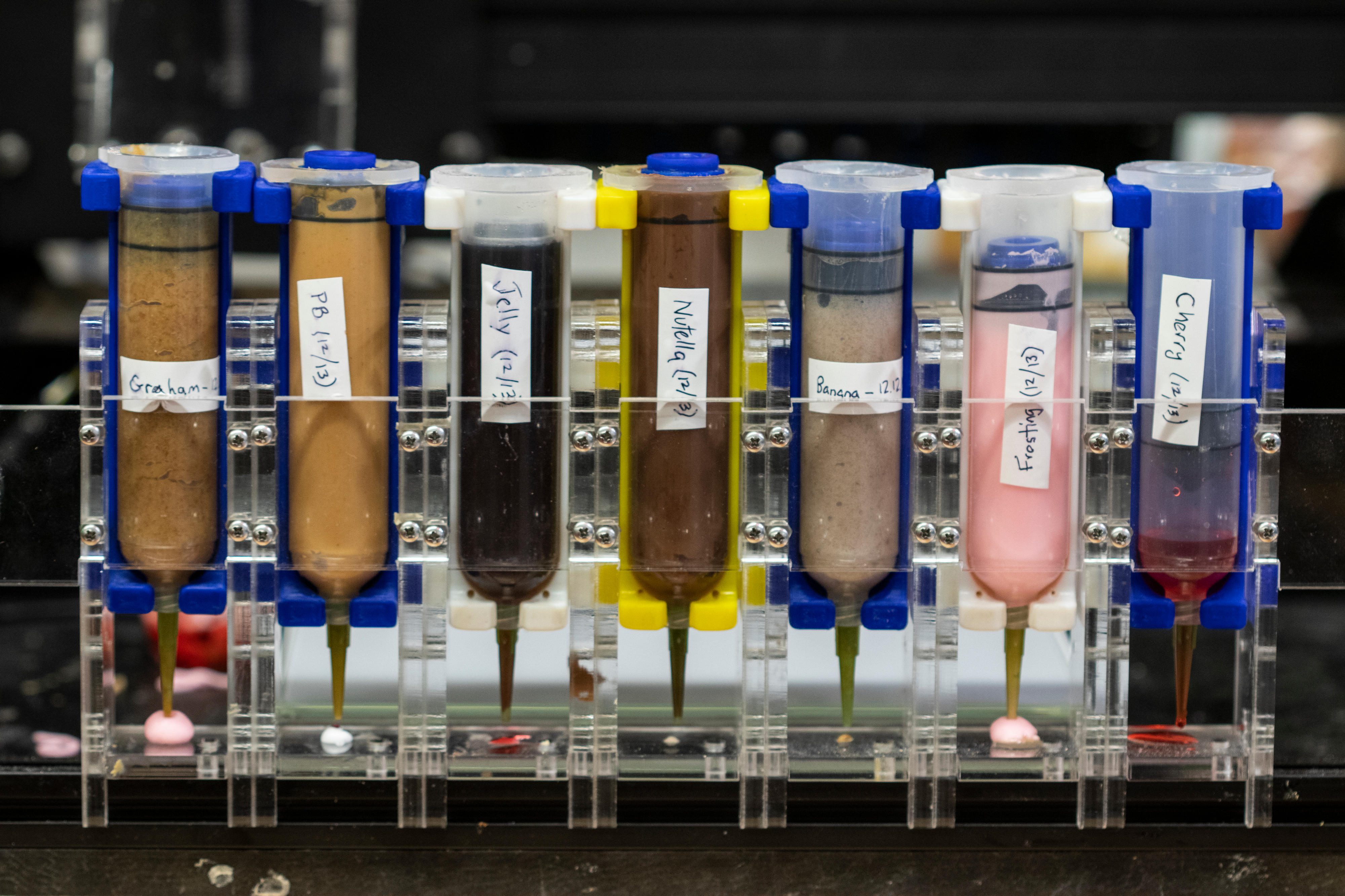Three-dimensional (3D) printing has already proved its worth at great feats of engineering, but the technology has now been used for its tastiest challenge yet: constructing cheesecake. Now, scientists have shown how their “digital cooking” approach can successfully create multi-layered cakes, which they argue has many advantages over those made by the hands of a mere human.
Mechanical engineers at Columbia University and Pace University used a special-made 3D printer to create a number of different cheesecakes involving seven key ingredients: graham cracker, peanut butter, Nutella, banana puree, strawberry jam, cherry drizzle, and frosting. To add another futuristic touch to their creation, the cakes were then cooked with high-precision lasers, which has to be seen to be believed.
The cakes don’t look like they’ll win The Great British Baking Show any time soon and there’s no word on how they taste, which is no doubt a major limitation of the study.
Ingredients that were used for the seven-ingredient 3d-printed dessert. Image credit: Jonathan Blutinger / Columbia Engineering
Nevertheless, the experiments showed the 3D printer was able to create a multi-layered cake made of numerous ingredients. The tests showed that graham crackers were the best for forming a foundation for each layer, while peanut butter and Nutella were best used as supporting layers to form pools to hold the softer ingredients, like banana and jam.
To cook the cakes, lasers were used to heat up the ingredients with super-high precision. The researchers describe this technique as similar to toasting a crème brûlée with a raw flame, but controlled on a millimeter scale.
The study concedes that the food created by this technique does count as ultra-processed food, which tons of recent studies have shown is terrible for your health. However, they argue that the digital cooking approach may help address this problem, as it’s possible to precisely calibrate the food’s nutrient and calorie content.
“We have an enormous problem with the low-nutrient value of processed foods,” Professor Christen Cooper, study author from the Department of Nutrition and Dietetics at Pace University, said in a statement.
“3D food printing will still turn out processed foods, but perhaps the silver lining will be, for some people, better control and tailoring of nutrition – personalized nutrition. It may also be useful in making food more appealing to those with swallowing disorders by mimicking the shapes of real foods with the pureed texture foods that these patients – millions in the U.S. alone – require,” continued Professor Cooper.
Furthermore, they also argue that the autonomous nature of digital cooking may lower the risk of foodborne illness and disease transmission as it involves less human handling.
On top of all this, they even suggest that 3D printing could be used to make food production more sustainable.
“Printing with food may also allow for considerable environmental sustainability. Ingredients could be sourced and processed for consumption locally, assisting local farmers and food purveyors. Advocates also point to this technology’s ability to help produce products such as plant-based meats, algae, and lower-cost unconventional proteins to consumers,” the study authors write.
“Printed and laser-cooked food also offers opportunities for manufacturers to extend shelf-life, since the heat, light and oxygen involved in the process can be controlled on a millimeter scale. Lastly, food waste could also be reduced since users would just be printing the ingredients they want to consume,” they continue.
Whether or not 3D-printed cakes will be making their way to a bakery near soon is yet to be seen. However, it does look increasingly likely that 3D printing will play some important role in the future of food production.
The study is published in the Nature journal npj Science of Food.
Source Link: Scientists Create 3D-Printed Cheesecakes Cooked To Perfection With Lasers
